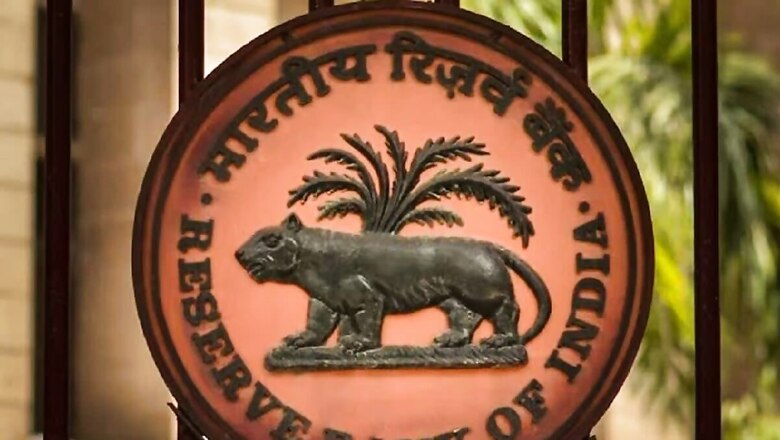
views
The Reserve Bank of India (RBI) has recently transferred Rs 2.11 lakh crore surplus to the central government for the financial year 2023-24. It’s a record transfer and more than double the dividend transferred last year. But, how does the RBI, despite not being a commercial entity, earn money or profit?
Among other functions, the Reserve Bank of India’s main function is to mint money and is the bank of banks. Through its management of financial markets, foreign exchange reserves, and government securities, the RBI earns income. RBI’s income comes from interest payments, fees, and potential gains from forex activities.
RBI earns significant money comes from seigniorage or printing money.
V K Vijayakumar, chief investment strategist at Geojit Financial Services, said, “The RBI is not a commercial organisation that earns profits. But, it has a huge income. The Reserve Bank earns huge income from seigniorage, i.e, printing of currency and putting that currency into circulation. The cost of printing a Rs 500 note is around Rs 2. So, when the RBI prints it and puts it into circulation, it makes a profit of Rs 498.”
The RBI subscribes to the bonds issued by the Government of India by printing currency and earns interest on that. The government pays interest by taxing the people. So, the money should be spent on people’s welfare. “That’s why part of RBI’s surpluses are transferred to the government for meeting public expenditure,” he added.
Why Does RBI Pay Dividend To Government?
After allocating reserves for contingencies and ensuring its own financial stability, the RBI transfers a portion of its surplus profits to the government. This dividend serves a dual purpose. It acts as a significant source of income for the government, helping to bridge the gap between its expenditure and revenue. Additionally, a healthy dividend can contribute to a lower fiscal deficit, promoting economic stability.
RBI’s FY24 Dividend Impact On Govt Finances
On May 22, the RBI approved a Rs 2.11 lakh crore dividend payout to the central government for 2023-24, more than double the amount it paid for the previous 2022-23 financial year. The decision was taken at the 608th meeting of the Central Board of Directors of the Reserve Bank of India held under the chairmanship of Governor Shaktikanta Das.
According to economists, the RBI’s decision to transfer a record Rs 2.11 lakh crore surplus to the central government for 2023-24 would help boost the Centre’s resource envelope in FY2025, easing the fiscal deficit by 0.4 per cent, allowing for enhanced expenditures and a sharper fiscal consolidation.
The amount of Rs 2.11 lakh crore, which is more than double what was paid in the previous year, offers a much-needed shot in the arm for government finances. It allows for fiscal consolidation, potentially lower borrowing needs, and increased spending options, according to the economists.
The dividend payout was Rs 87,416 crore for the previous year 2022-23.
The economists attribute this windfall to a confluence of factors. Upasna Bhardwaj, chief economist at Kotak Mahindra Bank, said higher interest rates both on domestic and foreign securities, significantly high gross sale of forex exchange along with limited drag from liquidity operations compared to the previous year, have probably led to such a whopping dividend.
“Positively, this comes with the contingency risk buffer being kept at the higher end of the statutory requirement. We expect such a windfall to help fiscal deficit ease by 0.4 per cent in FY25,” Upasna Bhardwaj added.
This translates to more breathing room for the government, potentially allowing for lower borrowing in the upcoming budget, she added.
Aditi Nayar, chief economist at ICRA, said, “The higher-than-budgeted RBI surplus transfer would help to boost the GoI’s resource envelope in FY2025, allowing for enhanced expenditures or a sharper fiscal consolidation than what was pencilled into the Interim Budget for FY2025.”
The surplus amount of Rs 2.11 lakh crore far exceeds the Rs 1.5 trillion budgeted for dividends and profits in the interim budget.

















Comments
0 comment